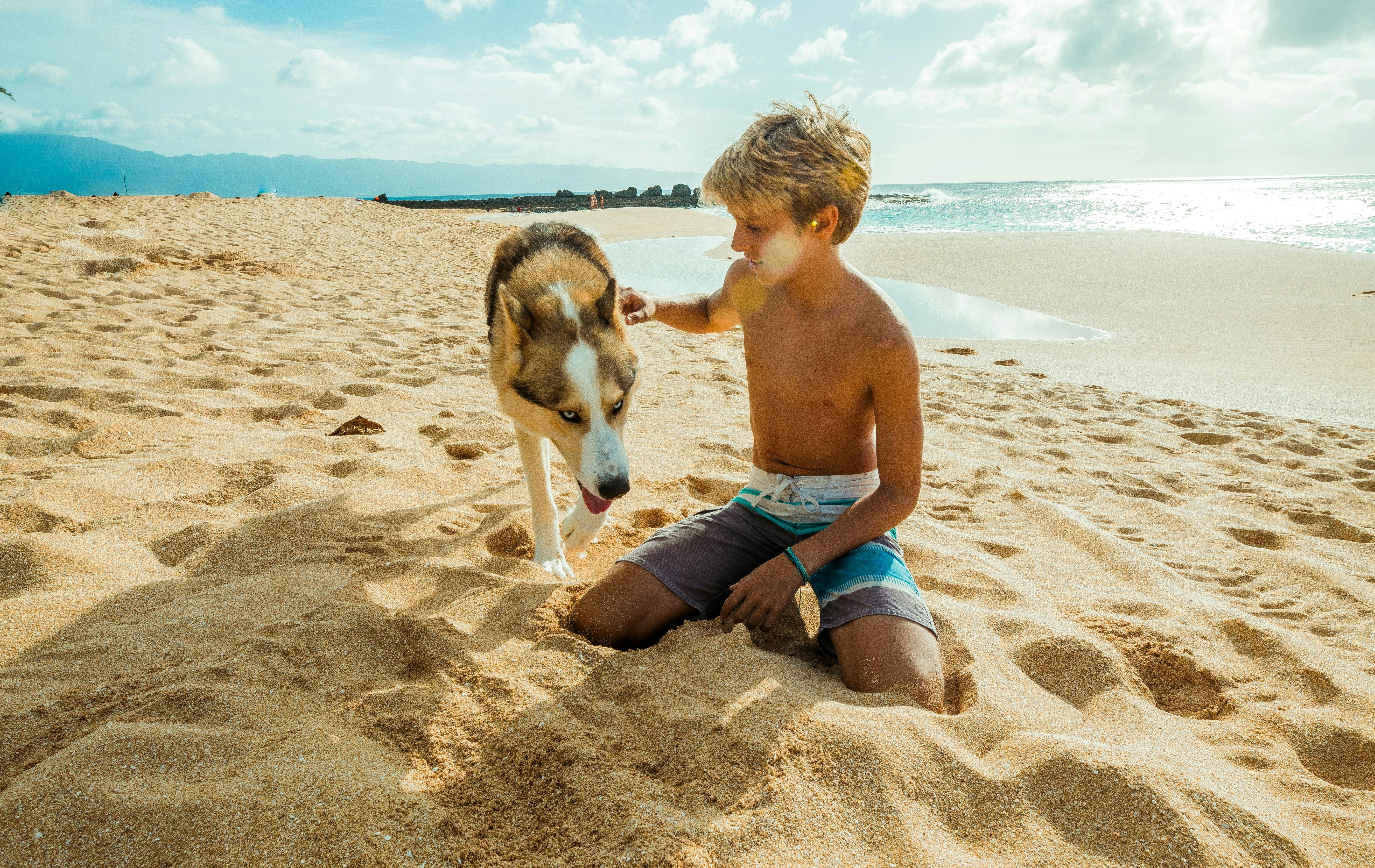‘These dogs should not be in Cyprus’

People are not always kind to their animals in Cyprus.
In the last few months, we’ve seen a dog dragged behind a car, a kitten beheaded in a Yeri cemetery, and a Chihuahua covered in sulphuric acid.
These were all deliberate incidents, reprehensible acts carried out by what one can only assume were those devoid of respect for life. But even those of us who would never dream of purposefully harming a living creature may sometimes get it a little wrong.
Especially when it comes to our beloved dogs…
While cats are better suited to Cyprus’ extreme heat and will instinctively seek shade, dogs’ natural cooling mechanisms, such as panting, are not always enough in very high temperatures. And dogs also require exercise – which can be challenging in the debilitating heat of a Cyprus summer…
“I’ve seen so many people walking their dogs at noon,” laments Stephanos Severis, who runs the Cyprus School of Dog Training. “But if a human can’t walk on the ground barefoot, why would a dog be able to?”
A well-known advocate for responsible pet care, Stephanos is an expert on all things canine.
“Firstly, in the same way that humans shouldn’t be out in extreme weather, neither should dogs. Dogs can also suffer from heatstroke and sunburn, so shade and cool are essential throughout the day.”
Last year, PETA declared a heat-related crisis, reporting that deaths of dogs from heatstroke had nearly doubled in the last 12 months.

“And yet I often see people walking their dogs at midday,” says Stephanos. “That’s not something anyone should be doing after 10am, or before 5.30pm. Personally, I would never walk my dogs between 9.30am and 6pm. Especially this year – the 2024 summer is extreme.
“The ground absorbs and radiates huge amounts of heat: you’ll often see a dog is pulling towards the shade. The walker may not realise what’s happening, they think they should be teaching their dog to stay with them. But the dog is just trying to get out of the sun.”
Another popular misconception is that the beach is a great place for dogs.
“Yes,” says Stephanos, “the beach is fun. But the sand burns your feet – you’d hop around all over the place if you weren’t wearing shoes. And it can burn your dogs’ paws too.
The sea can be another issue: “Many dog guardians believe a dog that’s been in the sea is cool, that it won’t heat up. But it’s easy for dogs to sunburn. They need shade and drinking water, just like us. And dogs who are not used to the sea will often inadvertently drink salt water while they’re swimming. This can cause rapid dehydration.
“I had a dog who tried to bite the water while swimming,” he reveals. “But that meant she was swallowing water. So a life vest is often a good idea to keep your dog’s head well above the waves.”
The same goes for swimming pools, which are full of chemicals, Stephanos adds. But even the air itself can cause problems…

“Brachycephalic dogs – dogs without snouts such as pugs and bulldogs – already have respiratory issues. They’ve been overbred by humans to look that way. And this unnatural overbreeding causes any amount of breathing problems – especially in the Cyprus heat. I’ve heard of such breeds dying when their throats become inflamed and they struggle to breathe.
“If you’ve got a mutt,” he adds, “it’s more likely to be genetically suited to Cyprus, and can handle the summer fairly well. But dogs that have been bred to live and cope in cold weather such as Huskies, Malamutes and Chow Chows should simply not be here. These dogs should not,” he emphasises, “be in Cyprus.”
Shaving a dog is a common recourse in the summer heat. “But that’s not something we recommend for any dog,” says Elias Assi of Nicosia’s Paws Up Pet Shop.
An expert groomer with 12 years of experience (as well as two much-loved dogs of his own), Elias explains that a dog’s coat is designed to ensure insulation in winter and cooling in the summer.
“This is particularly true for double-coated dogs,” he explains. “These breeds naturally shed their inner layer of fur in the heat, while the outer layer is retained to protect from sunburn.
Instead, Elias recommends frequent brushing to prevent matting and skin irritation, as well as regular visits to a qualified groomer.
As for what you should be looking out for this summer, Doctor of Veterinary Medicine Antonis Korniotis notes that signs of canine heatstroke include “feeling hot to the touch, tremors, wobbling, an inability to stand, and tachypnoea – excessive breathing and panting.
“Dogs regulate their temperature through breathing,” Antonis adds, “and heatstroke can cause oedema in the lungs – prognostically, this is not good. In an extreme situation there may be a loss of bladder control or vomiting.
“Whatever the symptoms, the first thing you should do is get your dog into a cool (but not cold) shower,” Antonis explains. “Then move into a cool room – again, not cold because this could cause hypothermia when your dog is wet. Take your pet’s temperature every 20 minutes and, ideally, get it straight to a qualified vet – if necessary, they will administer intravenous fluids and oxygen.”
Like Stephanos, Antonis makes particular mention of Brachycephalic dogs (such as Bulldogs, Pugs, Boxers, Shih Tzus, Boston Terriers, and Pekingese). Along with very old or young dogs, as well as dogs with thick, heavy coats, these breeds are especially prone to heat-related respiratory issues.
“With the summer we’re having, we must take care of every dog, no matter its breed or age. I have seen far too many cases this summer of dogs suffering from heatstroke. Not all,” Antonis concludes sadly, “end well.”
